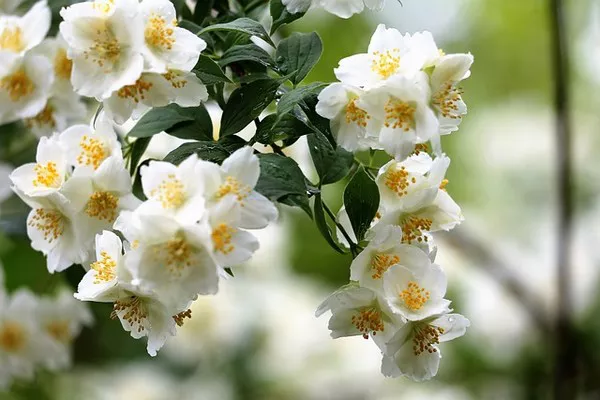Jasmine, with its intoxicating fragrance, has captivated cultures for centuries. Whether used in perfumery, tea, or as a garden adornment, the allure of jasmine lies in its delicate yet potent scent. Among the various species of jasmine, one question persists: which jasmine flower smells the best? This article embarks on a sensory exploration, delving into the intricacies of jasmine cultivars to uncover the most exquisite aroma.
Understanding Jasmine: Aromatic Wonders
Before delving into the nuances of jasmine scents, it’s imperative to grasp the botanical and olfactory characteristics of this beloved flower. Jasmine belongs to the genus Jasminum, encompassing over 200 species of flowering plants in the olive family (Oleaceae). Native to tropical and subtropical regions of Eurasia, Australasia, and Oceania, jasmine species exhibit diverse growth habits, leaf shapes, and flower forms.
What distinguishes jasmine, however, is its fragrance. The scent profile of jasmine is characterized by its sweet, floral notes with hints of musk and fruitiness. This complex aroma arises from the presence of various volatile compounds, notably benzyl acetate, linalool, and indole. These constituents contribute to the distinctive fragrance that has made jasmine a staple in perfumery and aromatherapy.
The Great Debate: Which Jasmine Reigns Supreme?
When it comes to identifying the best-smelling jasmine flower, opinions abound. Jasmine enthusiasts and experts alike have engaged in spirited debates, each advocating for their favored cultivar. To navigate this aromatic landscape, it’s essential to examine some of the most renowned jasmine varieties and assess their olfactory profiles.
Jasminum sambac: The Queen of Jasmine
Widely revered for its intense fragrance, Jasminum sambac, commonly known as Arabian jasmine or sampaguita, reigns as one of the most aromatic jasmine species. Native to Southeast Asia, this evergreen shrub produces small, white flowers that release a heady, sweet scent, particularly in the evening. The aroma of Jasminum sambac is often described as rich, exotic, and deeply floral, evoking images of moonlit gardens and tropical nights.
Jasminum officinale: The Classic Jasmine
In the realm of European jasmine species, Jasminum officinale holds a place of honor. Also known as common jasmine or summer jasmine, this deciduous vine produces clusters of white, star-shaped flowers renowned for their delicate fragrance. The scent of Jasminum officinale is lighter and more airy compared to its Asian counterparts, with notes of sweet jasmine and a subtle green undertone. Its fragrance evokes a sense of nostalgia, reminiscent of balmy summer evenings and blooming gardens.
Jasminum grandiflorum: The Jasmine of India
Hailing from the Indian subcontinent, Jasminum grandiflorum, commonly referred to as Spanish jasmine or royal jasmine, is esteemed for its bold, voluptuous blooms and intoxicating aroma. The flowers of Jasminum grandiflorum are larger than those of Jasminum sambac, emitting a scent that is sweet, floral, and slightly fruity. This jasmine variety is often favored in perfumery for its full-bodied fragrance, which lends depth and sensuality to compositions.
Jasminum polyanthum: The Pink Jasmine
Distinctive for its blush-pink flowers and vigorous growth habit, Jasminum polyanthum, or pink jasmine, offers a unique olfactory experience. Native to China and Myanmar, this jasmine species exudes a sweet, candy-like scent with floral undertones. While not as potent as Jasminum sambac or Jasminum grandiflorum, Jasminum polyanthum compensates with its charming hue and delicate fragrance, making it a favorite among gardeners seeking a whimsical addition to their landscapes.
Jasminum auriculatum: The Juhi Jasmine
Originating from South Asia, Jasminum auriculatum, also known as juhi or Indian jasmine, captivates with its small, star-shaped flowers and captivating aroma. The scent of Jasminum auriculatum is reminiscent of orange blossoms, with sweet, citrusy notes that mingle with traditional jasmine fragrance. Often used in religious ceremonies and traditional medicine, this jasmine variety exudes a comforting, uplifting scent that resonates deeply with those who encounter it.
Factors Influencing Jasmine Fragrance
While the inherent fragrance of jasmine species forms the foundation of their olfactory appeal, several factors can influence the intensity and character of their scent:
Growing Conditions:
Environmental factors such as sunlight, temperature, soil composition, and humidity play a crucial role in shaping the fragrance of jasmine flowers. Ideal growing conditions can enhance the production of volatile aromatic compounds, resulting in a more potent scent.
Cultivation Practices:
Pruning, fertilization, and watering regimes can impact the overall health and vigor of jasmine plants, consequently influencing the quality of their fragrance. Proper care and maintenance are essential for maximizing the aromatic potential of jasmine cultivars.
Harvesting and Processing:
The timing of jasmine flower harvest and post-harvest processing methods can affect the preservation of volatile aromatic compounds. Traditional techniques such as steam distillation or solvent extraction are employed in perfumery to capture the essence of jasmine fragrance.
Genetic Variation:
Genetic diversity within jasmine species can give rise to subtle variations in fragrance profiles. Selective breeding and hybridization efforts aim to develop cultivars with desired olfactory characteristics, catering to diverse consumer preferences.
Cultural Significance:
Cultural associations and traditions surrounding jasmine influence perceptions of its fragrance. In many cultures, jasmine is revered for its symbolic significance, representing love, purity, and spiritual enlightenment. These cultural connotations contribute to the emotional resonance of jasmine fragrance.
Conclusion
In the realm of aromatic wonders, jasmine stands as a testament to nature’s beauty and complexity. Across continents and cultures, jasmine flowers captivate the senses with their sweet, floral fragrance, inspiring awe and admiration. While debates may persist regarding which jasmine flower smells the best, the truth lies in the eye (or rather, the nose) of the beholder.
Whether it’s the sultry allure of Jasminum sambac, the classic charm of Jasminum officinale, or the exotic allure of Jasminum grandiflorum, each jasmine variety offers a unique olfactory experience, inviting us to immerse ourselves in the splendor of nature’s perfumed creations. Ultimately, the best-smelling jasmine flower is not merely a matter of botanical taxonomy or chemical composition but a deeply personal journey of sensory exploration and appreciation. As we inhale the intoxicating fragrance of jasmine, we are reminded of the profound connection between scent, memory, and emotion, transcending language and culture to unite us in shared olfactory delight.


